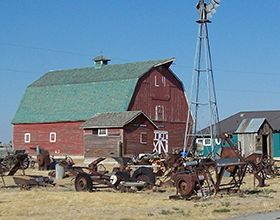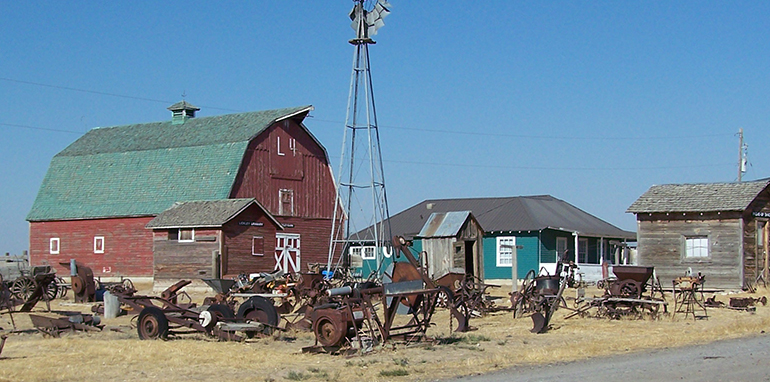
In the first decades of the 20th century, farmers flocked to Southern Idaho to participate in the “magic” that created the Magic Valley — irrigation. They left behind not only a rich agricultural history that continues today, but also an architectural history: Barns. The Magic Valley’s barns are beloved landmarks that dot rural areas around cities like Buhl, Jerome, Twin Falls, and Murtaugh. They’re a great excuse to explore the Valley (and not a bad place to snap your next Christmas card pic, either).
Kunze-Sandmeyer Barn | 1705 E. 4000 N., Buhl
This barn, also known as the Old Sandmeyer Barn, was built in 1911 or 1912 for Gustave Kunze. At the time, Kunze was part of Southern Idaho’s burgeoning dairy industry. He established Clover Leaf Cheese and hired Henry Schick to design a barn for his business; Schick’s grand barn, meant to support 100 cows, now holds up to 350 people for events.
Kunze Barn | 3960 N. 1700 E., Buhl
Rudolf Kunze, the son of Gustave Kunze, moved to Buhl in 1910 and began working on his own dairy business sometime around 1914 or 1915, according to historical records. Although the barn resembles some of the other barns Henry Schick built in the area, it was not built by him — and the Kunze barn has suffered from some sagging thanks to its lack of concrete walls. Over the years, the barn has been shored up by concrete.
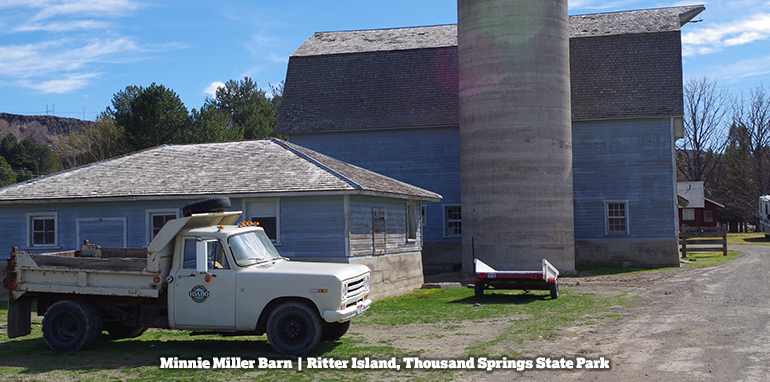
Minnie Miller Barn | Ritter Island, Thousand Springs State Park
Minnie Miller came from Utah to Southern Idaho to breed the purest, best Guernesey cows in the nation. She built what was then a state-of-the-art barn on Ritter Island in the Snake River to help her achieve her goals. Now part of Ritter Island State Park, you can still see Miller’s well-kept barn and the springs that now bear her name.
Bowlby-Freeman Barn | 1744 E. 4300 N., Buhl
This 1912 barn, also designed by Henry Schick, made it to the National Register of Historic Places in 1983. T.P. Bowlby came to Buhl with Gustave Kunze to found Southern Idaho’s dairy industry and take advantage of the readily available alfalfa feed in the area. His magnificent barn with its gambrel roof still stands.
Vierstra Barn | 4044 N. 1600 E., Buhl
This cheery barn, painted in iconic red, has towering concrete walls that have withstood Idaho winters since the first decade of the 20th century. It’s no longer used for farming, but instead is a testament to the region’s past.
Dau-Webbenhorst Barn | 1553 E. 4000 N., Buhl
This 1913 barn is another Henry Schick creation and one of Southern Idaho’s most iconic barns. It was built for Max Dau and was one of the buildings that introduced gambrel-style roofing to the area. By the time Schick built the Dau-Webbenhorst Barn, he was using braces on the side walls — and this fortified construction is one of the reasons it’s still standing. Nancy and Ed Tyrrell, who now own the barn, run their antiques and framing business there.
Eslinger Barn | 3424 N. 3100 E., Twin Falls
This barn may be tilting, but it’s still working! The Eslinger Barn was constructed in 1920 by Oscar Eslinger, who moved to the area with his wife, Edna, from Colorado. The barn continues to be used for storage today.
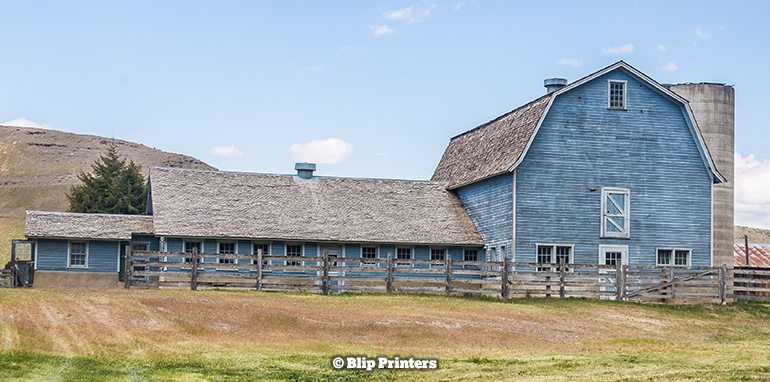
Uhlig Barn | 3484 E. 3500 N., Murtaugh
This 1915 barn was built at U.S. 30 and 4550 E., but in the early 1980s it was moved to its current location and converted into an office. The barn was part of George and Elsie Fisher’s apple farm; the barn was later sold to Ed Uhlig and bears his name today.
Gettert Barn | 4111 E. 3800 N., Hansen
This 1910 barn is a bit off the beaten track, but you’ll be rewarded with the sight of a 40 foot-by-40 foot red barn that is still in use today.
Fonley-Heidemann Barn | 3810 N. 3800 E., Kimberly
This 1920 barn was once in a rural area, but over the past several years the area has been subdivided for houses. This white barn was built by Ingwall Fonley for his livestock; although Fonley’s house no longer stands, his fine barn is nearing its centenary.
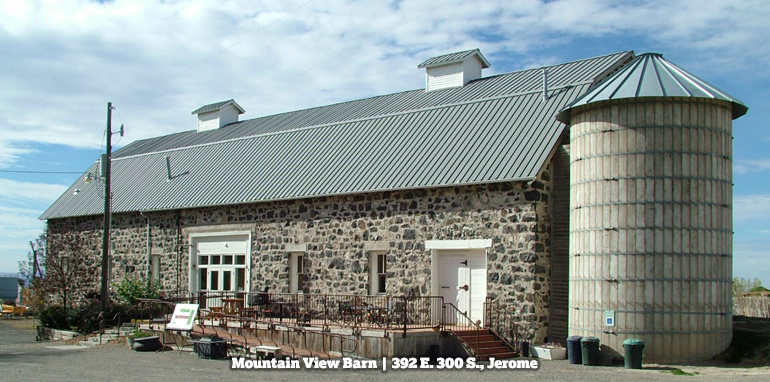
Mountain View Barn | 392 E. 300 S., Jerome
Back at the turn of the 20th century, when Jacob VanWagener built his farm, he couldn’t have imagined that it would provide fun and memories to thousands of Idahoans well into the 21st century. But the lava rock barn built on the property — the earliest stone building in Jerome County — is now home to a popular coffee shop and restaurant. You can read more about this historic barn here.

